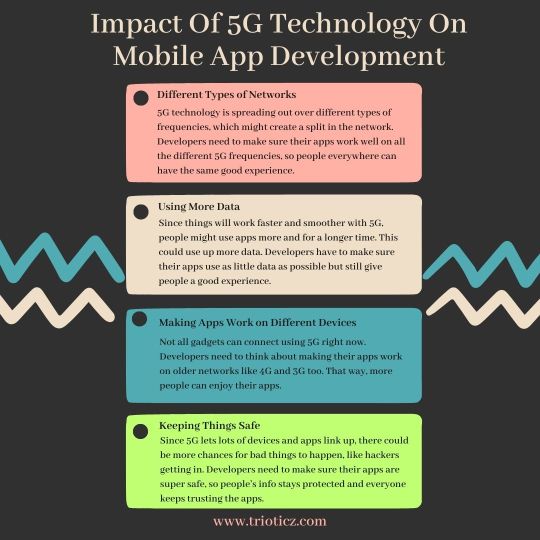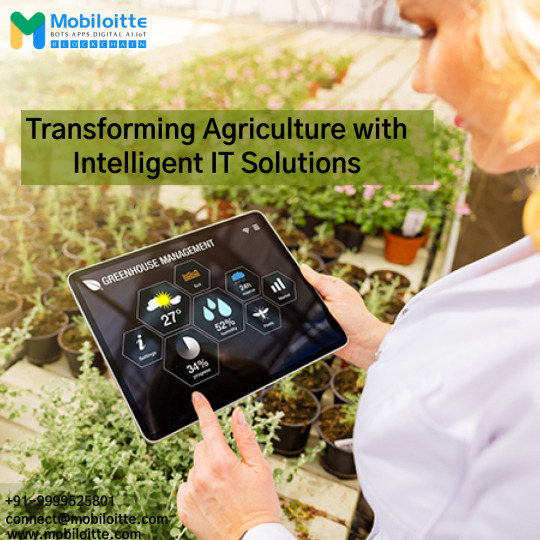#IoT data processing
Explore tagged Tumblr posts
Text
#IoT architecture#IoT architecture layers#IoT layers#Edge computing in IoT#IoT data processing#IoT security#Legacy IoT
0 notes
Text
Edge Analytics & Streaming Data Processing: Harnessing the Power of Real-Time IoT Data at the Network Edge.
Sanjay Kumar Mohindroo Sanjay Kumar Mohindroo. stayingalive.in Discover how real-time IoT data processed at the network edge fuels rapid decisions and inspires innovations in technology. #EdgeAnalytics #StreamingData This post explains how real-time data from IoT devices is processed at the network edge. It shows how this method boosts rapid decision-making while reducing delays. The content…
#Data at the Edge#Data Processing#Edge Computing in IoT#Instant Data Insights#Low-Latency Analytics#Network Edge Computing#Real-Time Decision Making#Sanjay Kumar Mohindroo
0 notes
Text
Nexus: The Dawn of IoT Consciousness – The Revolution Illuminating Big Data Chaos
#Advantech IoT#Aware World#Big Data#Big Data Chaos#Bosch IoT#Cisco IoT#Connected World#Contextual Awareness#Contextual Understanding#Continuous Improvement#Data Filtering#Distributed Intelligence#Edge AI#edge computing#Edge Data#Edge Intelligence#Edge Processing#HPE Edge#Intelligent Systems#Internet of Things#IoT#IoT Awareness#IoT Consciousness#IoT Ecosystem#IoT Hardware#IoT Networking#IoT Platform#Lean Efficiency#Nexus#Operational Optimization
0 notes
Text
How to Use Edge AI for Faster Data Processing
Introduction In today’s fast-paced digital world, real-time data processing is crucial for businesses, smart devices, and automation. Edge AI is revolutionizing the way data is processed by shifting computations closer to the source—right on the device itself. This reduces latency, improves efficiency, and minimizes dependency on cloud computing. In this guide, we’ll break down what Edge AI is,…
0 notes
Text
#Retail Inventory Management#Microservices Architecture#Event-Driven Architecture#AI in Retail#IoT Integration#Blockchain Transparency#Real-Time Data Processing#Supply Chain Optimization#Retail Technology#Inventory Optimization
0 notes
Text
#impact of 5G technology on IoT devices in smart cities#benefits of 5G for smart city infrastructure and IoT#5G applications in smart city IoT solutions#real-time data processing with 5G in smart city IoT
0 notes
Text

IoT Data Analytics Benefits
Explore how IoT data analytics can transform industries. Learn about key use cases and the benefits of leveraging IoT for more intelligent business decisions and efficiency. In this context, Internet of Things data analytics relates to the collection, transformation, and analysis of data from Internet of Things devices.
#IoT Data Analytics#Internet of Things data analytics#Data acquisition#data management#data processing#data presentation#Primathon
1 note
·
View note
Text
Discover how edge computing is revolutionizing technology by enabling faster data processing, reducing latency, and supporting IoT and AI-driven solutions. Learn about its impact on industries and the future of digital transformation.
#Edge computing#future technology#data processing#low latency#IoT#AI integration#digital transformation#cloud computing#real-time data#emerging technologies
0 notes
Text
Video Autogenerated by Faceless.Video
Micro AI is revolutionizing the way we interact with technology.
Micro AI is transforming our interaction with technology by providing lightweight, hyper-efficient models tailored for Edge devices such as smartwatches, IoT sensors, drones, and home appliances. This cutting-edge innovation facilitates real-time data processing and decision-making directly on the device, eliminating reliance on constant cloud connectivity. Imagine your smartwatch instantly analyzing health data or your smart home system making immediate adjustments based on real-time inputs—all thanks to micro AI. One of the key benefits of micro AI lies in its low latency and local processing capabilities. In industrial automation, it can monitor machinery in real time to predict failures before they occur. For smart homes, it enhances convenience and security by allowing appliances to learn from user behavior while optimizing energy consumption. In healthcare, wearable devices equipped with micro AI can provide critical monitoring of vital signs and alert medical professionals during emergencies—ensuring timely interventions that could save lives.

#microai #EdgeComputing
#neturbiz#micro AI#AI technology#Edge devices#SmartWatches#IoT sensors#drones#home appliances#real-time data#local processing#low latency#industrial automation#smart homes#healthcare technology#productivity enhancement#energy efficiency#wearable devices#health monitoring#smart thermostat#security systems#user behavior#machine monitoring#predictive maintenance#autonomous appliances#emergency alerts#continuous monitoring#technology revolution#intelligent systems#operational costs#data processing
0 notes
Text
The Next Big Thing: How Edge Computing is Shaping the Future of Business
Discover the transformative power of edge computing in this insightful blog. Explore how this cutting-edge technology is revolutionizing data processing by bringing it closer to the source, enabling real-time analytics, enhancing IoT capabilities, and driving digital transformation. Learn about the benefits, challenges, and future trends in decentralized computing. Read more : https://www.sganalytics.com/blog/discover-the-power-of-edge-computing/

0 notes
Text
Unlocking Insights: How Machine Learning Is Transforming Big Data
Introduction
Big data and machine learning are two of the most transformative technologies of our time. At TechtoIO, we delve into how machine learning is revolutionizing the way we analyze and utilize big data. From improving business processes to driving innovation, the combination of these technologies is unlocking new insights and opportunities. Read to continue
#Tech Trends#TagsAI and big data#algorithmic bias#big data#big data analysis#customer insights#data processing#data quality#data security#ethical considerations in AI#fraud detection#healthcare innovations#IoT and machine learning#machine learning#machine learning applications#machine learning trends#predictive analytics#Technology#Science#business tech#Adobe cloud#Trends#Nvidia Drive#Analysis#Tech news#Science updates#Digital advancements#Tech trends#Science breakthroughs#Data analysis
1 note
·
View note
Text
#pressure sensor#sensors#instrumentation#measurement#engineering#technology#physics#electronics#industrial automation#process control#manufacturing#automation#IoT#smart devices#smart homes#smart cities#data analytics#data science#machine learning#artificial intelligence#automation technology#industrial automation systems#process automation#manufacturing automation#sensor technology#pressure measurement#sensor types#pressure sensor types#diaphragm pressure sensor#strain gauge pressure sensor
0 notes
Text
10 Most important Technologies that IT Advisors use to Navigating the Future of Information Technology
Introduction as IT Advisors In the dynamic realm of Information Technology (IT), staying ahead requires a powerful arsenal of cutting-edge technologies. IT advisors, the guiding force behind digital transformations, leverage a spectrum of tools to optimize operations, enhance security, and propel their clients into the future. In this exploration, we’ll delve into the tech landscape that…

View On WordPress
#5G technology#AI and machine learning#automation#Blockchain#cloud computing#collaboration tools#connectivity#cybersecurity#data analytics#digital transformation#edge computing#information security#Internet of Things (IoT)#IT Advisors#IT infrastructure#predictive analysis#Robotic Process Automation (RPA)#Technologies#technology landscape#virtualization
1 note
·
View note
Text
Empowering IOT: The Evolution of Edge Computing in Data Processing
Welcome to the age of Internet of Things (IoT), where our daily lives are seamlessly connected through smart devices, sensors, and digital systems. As this interconnected network expands exponentially, one underlying question arises: How do we efficiently manage and process the massive amounts of data generated by these devices? Enter edge computing – a game-changing solution that empowers IoT in ways we never thought possible.

In this blog post, we delve into the evolution of edge computing and explore how it is reshaping data processing as we know it. Get ready to witness the birth of a technological revolution that will unleash the true potential of IoT!
INTRODUCTION TO EDGE COMPUTING
The Internet of Things (IoT) has been a major driver of edge computing. By 2020, there will be an estimated 20.8 billion IoT devices globally
It is a new paradigm in data processing, which brings computation and data storage closer to the sources of data generation, such as sensors and actuators in IoT devices. This is in contrast to the traditional centralized model in which data is collected at a central location before being processed and stored.
The decentralized nature of edge computing enables real-time processing of data as it is generated, without the need to first send it to a central location. This reduces latency and makes applications that require low latency, such as Augmented Reality (AR), possible. In addition, edge computing can reduce cost and bandwidth requirements by reducing the amount of data that needs to be sent to a central location for processing.
It is well suited for IoT applications due to the large number of devices and distributed nature of many IoT deployments. By moving computation and storage closer to the sources of data, edge computing can improve performance and reduce costs for these applications.
HISTORY AND TYPES OF EDGE COMPUTING
It is a type of data processing that brings computation and data storage closer to the point where information is being collected. By doing this, edge computing reduces latency, bandwidth usage, and energy consumption while also increasing security and privacy.
It has been around for decades, but it has only recently become more popular due to the proliferation of internet-connected devices (IoT). In the past, most data processing happened in centralized data centers. However, as IoT devices have become more common, the amount of data generated by these devices has increased exponentially. Sending all this data to a centralized data center for processing would result in significant latency issues. Thus, edge computing has become increasingly important for processing IoT data in real-time.
There are two main types : fog computing and mist computing. Fog computing is a type of edge computing that uses distributed nodes to process data locally before sending it to the cloud or a central server. Mist computing is a newer type of edge computing that takes fog computing one step further by bringing compute resources directly to end devices. This allows for even lower latency and higher security and privacy since data never leaves the device it’s collected on.
BENEFITS OF EDGE COMPUTING IN DATA PROCESSING
The benefits of edge computing in data processing are many and varied. By moving data processing and storage closer to the edge of the network, businesses can enjoy reduced latency, increased security, and improved resiliency. In addition, edge computing can enable real-time data processing and analysis, providing actionable insights that can help improve business operations.
One of the key benefits of edge computing is its ability to reduce latency. By moving data processing and storage closer to the edge of the network, businesses can enjoy shorter travel times for data packets, resulting in faster response times. This is particularly important for applications that require low latency, such as interactive gaming or virtual reality.
In addition to reducing latency,It can also improve security. By keeping data within the confines of a company’s internal network, businesses can better protect sensitive information from external threats. In addition, by storing data locally at the edge, businesses can minimize the impact of a potential network outage.
It can also improve resiliency. By distributing data across multiple locations, businesses can ensure that critical applications remain online even if one location experiences an interruption in service. This is especially important for companies with global operations that need to maintain 24/7 uptime.
CHALLENGES IN IMPLEMENTING EDGE COMPUTING
One of the challenges in implementing edge computing is the need for data processing to be done at the edge, rather than in the cloud. This requires specialised hardware and software to be installed on devices, which can be expensive.
Another challenge is ensuring that data is processed quickly enough so that it can be used in real-time applications. This often requires dedicated hardware and high-speed networks.
Security is a major concern when processing data at the edge. Because data is often stored locally on devices, it can be more vulnerable to attack. Therefore, it is important to have security measures in place to protect data.
APPLICATIONS WHERE EDGE COMPUTING IS USED
IoT devices are often used inremote or difficult-to-reach locations, making it hard to send data back to the cloud for processing. Edge computing brings data processing and storage closer to the IoT device, so that data can be processed and analyzed faster and more effectively.
Some common applications for edge computing in IoT include:
-Analyzing sensor data to detect issues or problems early on -Processing video footage from security cameras in real time -Storing data from wearables or other devices locally until it can be synced with the cloud -Controlling connected devices directly, without sending commands through the cloud first -AI applications like facial recognition, voice recognition, and object detection/classification without needing to send all data to the cloud for processing.
EXAMPLES OF COMPANIES USING EDGE COMPUTING TECHNOLOGY FOR IOT
As the Internet of Things (IoT) continues to grow and expand, so too does the need for efficient data processing. Edge computing is an emerging technology that is well-suited for IoT applications, as it allows for data to be processed closer to the source, rather than being sent back to a central location for processing. This can help to reduce latency, conserve bandwidth, and improve overall performance.
There are a number of companies that are already using edge computing technology for IoT applications. One example is Amazon, who uses edge computing in their AWS IoT platform to process data from connected devices in real-time. Another company making use of edge computing for IoT is Google, who uses it in their Cloud IoT Edge platform to allow devices to connect directly to the Google Cloud. Microsoft Azure also has an offering called Azure IoT Edge which enables devices to run cloud compute, analytics, and machine learning workloads locally on the device.
These are just a few examples of how It is being used by companies today to power their IoT solutions. With the continued growth of IoT applications, it’s likely that we will see even more companies making use of this technology in the future.
CONCLUSION
Edge computing is playing a rapidly expanding role in data processing, and its advantages over traditional cloud infrastructure has led to the rapid growth of IoT applications both in consumer circles and industry. As businesses continue to embrace this technology, new standards will emerge which make use of edge computing more secure and reliable for mission-critical operations.
In addition, the need for faster transmission further underlines why an effective integration between edge and cloud platforms is inevitable: with it comes greater scalability, flexibility, reliability as well as real time analytics capabilities that allow organizations around the world to better equip themselves against ever-growing threats such as cyber security.
#Empowering IOT: The Evolution of Edge Computing in Data Processing#web design#web development#web design company in mississauga#multimedia / flash animation services#app development#web design agency in toronto canada#digital marketing#web devlopment#digital marketing agency canada#graphic design
0 notes
Text

In an increasingly interconnected world, technology constantly evolves to meet the demands of users seeking faster. The installation of 5G technology is one such advancement that has received widespread attention. Get help from the best Mobile App Development Company in Coimbatore & Chennai or in your locations to the finest service. Trioticz is the best mobile app development company, Website Development Company in Coimbatore, and Digital Marketing Agency in Chennai feel free to contact us for further information.
#Augmented reality#Complex Data Processing#Content Delivery#Digital Marketing Agency in Chennai#Digital Marketing Company in Coimbatore#Edge Computing#Fast Speed#Internet Of Things#IOT Integration#Mobile App Development#Mobile App Development Company in Coimbatore & Chennai#Reduced Latency#Virtual Reality
0 notes
Text

Empowering Agriculture with Digital Solutions
Revolutionize the agriculture industry with Mobiloitte's advanced IT solutions. Leverage the power of Blockchain, AI, IoT, and the Metaverse to optimize farming processes, increase yields, and ensure sustainability. Our mobile and web apps, along with DevOps and cloud expertise, empower seamless operations and data-driven decision-making. Embrace the digital era and unlock the potential of agriculture with Mobiloitte.
#AI#IoT#Revolutionize the agriculture industry with Mobiloitte's advanced IT solutions. Leverage the power of Blockchain#and the Metaverse to optimize farming processes#increase yields#and ensure sustainability. Our mobile and web apps#along with DevOps and cloud expertise#empower seamless operations and data-driven decision-making. Embrace the digital era and unlock the potential of agriculture with Mobiloitt
0 notes